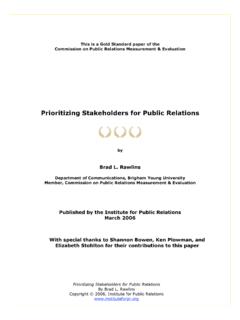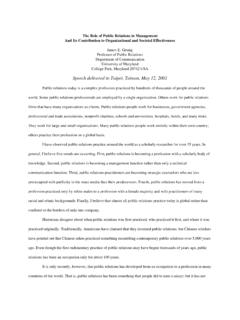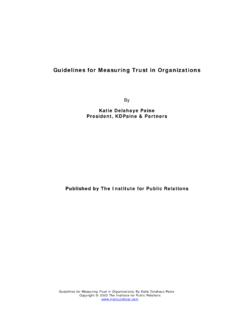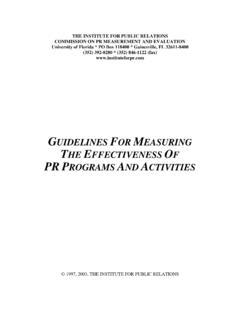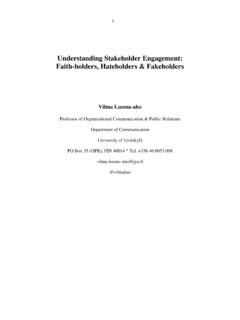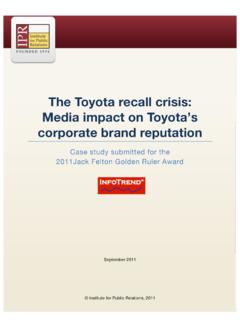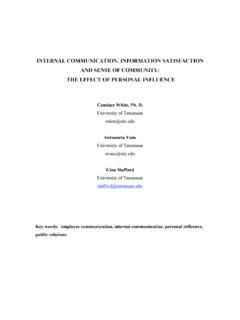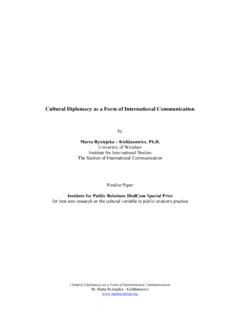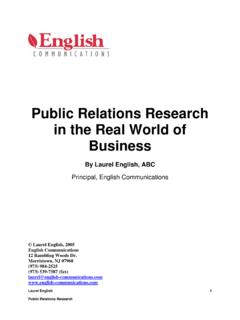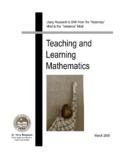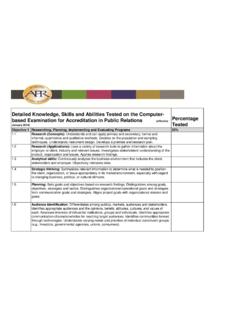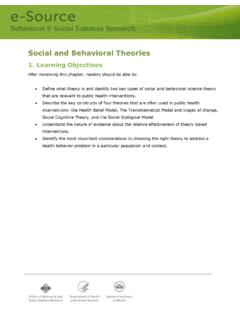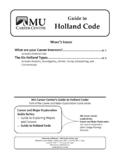Transcription of ADVERTISING VALUE E (AVE) - Institute for Public …
1 THE Institute FOR Public relations COMMISSION ON PR MEASUREMENT AND EVALUATION University of Florida * PO Box 118400 * Gainesville, FL 32611-8400 (352) 392-0280 * (352) 846-1122 (fax) ADVERTISING VALUE EQUIVALENCY (AVE) 2003, THE Institute FOR Public relations A Discussion of ADVERTISING VALUE Equivalency (AVE) By Bruce Jeffries-Fox President, Jeffries-Fox Associates 609-884-8740 Background The idea of ADVERTISING VALUE Equivalency (AVE) has been around for many years. It has generated much debate in the Public relations industry, with this debate focusing on both its reliability and validity.
2 Many people are attracted to it because it appears able to put a dollar VALUE on media coverage and, by extension, allows media relations people to compare their results with ADVERTISING . Yet the measure has a number of problems and it is important to anyone considering its use to consider both its strengths and its weaknesses. The IPR Commission does not endorse Ad VALUE Equivalency (AVE) as a measurement tool, but we hear all the time from people who have bosses or clients who demand it. This paper will provide some answers to those demands, as well as some other ways to think about showing the VALUE of what media relations professionals do.
3 Definitions AVEs are calculated by measuring the column inches (in the case of print), or seconds (in the case of broadcast media) and multiplying these figures by the respective medium s ADVERTISING rates (per inch or per second). The resulting number is what it would have cost to place an advertisement of that size in that medium. By assessing all of your media coverage in this way, and aggregating all such calculations, you can assign an overall AVE to your coverage within a certain time period. How much a publication charges for ADVERTISING is a reflection of its circulation, and its reputation versus its peers.
4 In Canada, for example, the Globe & Mail and the National Post have identical circulations, but the Globe & Mail can charge considerably more for ad space because it is the more credible publication. When using ad rates, therefore, you are taking into account both of these factors. Some people have gone beyond these calculations and applied another multiplier to allegedly take into account the PR factor. This refers to the idea that news messages are presumably more credible than ADVERTISING messages and are therefore more persuasive. To take this into account multipliers ranging from to 6 have been used throughout the industry.
5 The resulting numbers are often referred to not as AVEs, but as PR values. Conceptual problems Calculating AVEs is not a problem in itself its problems stem from what it is called and how it is used. Calling it an ADVERTISING equivalency strongly suggests that a news story of a particular size has equal impact to an advertisement of the same size in that publication. At this time, the Commission knows of no factual basis for this assumption. That is, there has been no research to confirm whether this is true. There is reason to believe that there is no simple way for the relationship between news stories and ADVERTISING to be compared.
6 For instance, there have been many studies in the field of journalism showing that over the past two decades the credibility of the news media has been declining as an increasing number of entertainment components are introduced into news stories and newscasts. Indeed, this is frequently referred to by journalists as their Credibility Crisis. Studies asking people about how much credibility they put in news media and ADVERTISING over time have shown news stories dropping to near-parity in recent years. Studies have also shown that the news media s credibility is quite different from one topic to the next.
7 From all this, we conclude that the relationship between the credibility of news coverage and ADVERTISING is not a constant one, but varies over time and by topic. A simple 1-for-1 rule does not begin to capture the complexity of the situation. While it is now probably obvious to the reader, since we don t even know that news stories are more credible than advertisements we certainly don t know what kind of a multiplier to apply to any basic calculations. Another conceptual limitation of AVEs is that they only VALUE what actually appear in the media. Yet it is often the case that Public relations professionals counsel clients to behave in a way that purposefully results in an absence of publicity.
8 In these cases no publicity at all is what is desired and what is valued. AVEs have no means of reflecting such VALUE . The final major conceptual problem with AVEs concerns the fundamentally different nature of communications involved with news and ADVERTISING . An advertisement is usually a part of a campaign in which that same advertisement or commercial is repeatedly placed in media. It is likely that a given person is exposed to that advertisement or commercial a number of times. Studies have shown that it generally requires repeated exposure to have an impact on consumers awareness, perceptions, attitudes and behaviors.
9 News stories don t work this way. While a given person may be exposed to a number of stories all about the same topic or event, it is most likely that each of these stories will be different, since they are written by different journalists armed with different facts and with different views on the subject. Some stories may be more favorable than others; some may be more detailed than others. We know that exposure to news coverage has an impact on consumers awareness, perceptions, attitudes and behavior; but we don t know how to compare the relatively diverse set of messages delivered by news coverage to the relatively homogeneous messages delivered by ADVERTISING .
10 Logistical problems The calculation of AVE also has some very practical problems. For example, in many cases no ADVERTISING rates exist. Many print publications do not accept advertisements on their front pages or at the front of major sections. Some broadcast news shows accept no ADVERTISING . And yet, very often these media and these locations within the media are exactly the ones that are most coveted! They are the most prominent and are therefore likely to be the most influential. While it is true that purveyors of AVE number have developed back up procedures when ad rates are not available, these procedures undermine or at least water down the basic concept.
